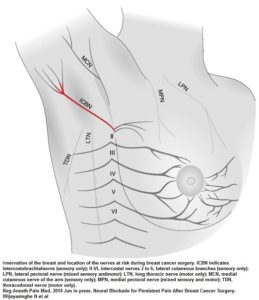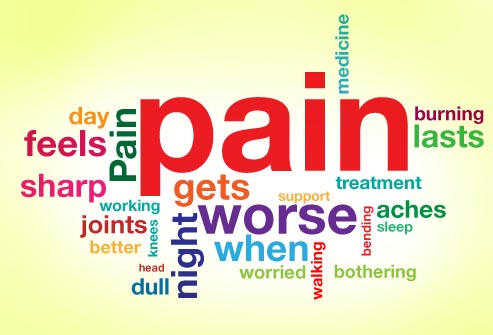“Chronic neuropathic pain affects between 20% and 50% of women after their breast cancer treatment…
Cancer research usually focuses on the efficacy of a specific cancer chemotherapy, radiation therapy or surgical procedure. This article focuses on a common side-effect of breast cancer therapy.

The fact is that chemo-induced neuropathic pain and chronic pain after mastectomy are common side effects that can saddle a surivor with chronic pain for life. Further, if you are experiencing chronic neuropathic pain after breast cancer surgery please understand that there are non-conventional therapies that may help you.
For more information on non-toxic breast cancer therapies to reduce the risk of relapse scroll down the page, post a comment or a question and I will reply to you ASAP.
To Learn More about Chronic Non-Cancer Pain- click now
Thank you,
David Emerson
- Cancer Survivor
- Cancer Coach
- Director of PeopleBeatingCancer
Articles of Interest-
“Chronic neuropathic pain affects between 20% and 50% of women after their breast cancer treatment…
…Neuropathic pain is typically characterized by burning, shooting, and electric shock-like sensations in the area around the treatment site. (Polomano & Farrar, 2006) In terms of pain quality, common verbal neuropathic pain descriptors include numbness, pins, and needles, burning, and stabbing, (Boureau, Doubrere, & Luu, 1990) as well as throbbing, lancinating, unpredictable, lightning-like, sharp, shooting, scalding, aching, and pruritic. (Davis, 2006)…
Indirect measurement of chronic neuropathic PPBT includes the objective assessment of associated symptoms such as edema, allodynia, and dysesthesia located in the axilla, chest wall, arm, or shoulder of the treatment site. (Selim et al., 2002) Quality of life can also be objectively measured; for example, 40% of women with chronic neuropathic PPBT report increased pain with movement leading to arm restriction and “frozen shoulder” syndrome; greater than 50% report pain with activities of daily life and sleep disturbances. (Selim et al., 2002)…
Persistent, unremitting stress can generate detrimental long-term effects, increasing an individual’s susceptibility to stress-related physical and mental health problems. (Arnstein, 2004) Thus, living with persistent pain can have a negative impact on an individual’s overall quality of life…
Unfortunately, there is still many discrepancies in the literature regarding the efficacy of pharmacologic management of chronic neuropathic pain, and further research in this area is needed…
“For many women, the pain of breast cancer does not end after surgery, and chronic pain after mastectomy—termed postmastectomy pain syndrome (PMPS)—can be mentally and physically debilitating.1,2
“Studies have shown that between 20% and 30% of women develop symptoms of PMPS after surgery…
Etiology of PMPS
“PMPS is a type of chronic neuropathic pain syndrome that can occur following breast surgery. It is typically associated with nerve fiber injury, but there may be other etiologies. It may be the result of trauma to the nerves during surgery or as a result of scar tissue,” explains Dr Boolbol…
“Symptoms are typical of neuropathic pain and include burning, tingling, and lancinating pain in the area of surgery,” says Houman Danesh, MD, director of the integrative pain management division at the Mount Sinai Health System. This pain has been described as throbbing, pins and needles, shooting, scalding, aching, or shooting.2 Although the pain can range from mild to severe, approximately 10% of patients describe the pain as severe enough to significantly compromise their quality of life…1″
“Breast cancer is one of the most prevalent cancers amongst women in the world. Unfortunately, even after adequate treatment, some patients experience severe pain either due to disease progression or due to treatment related side effects.
The persistent pain causes a negative physical and psychosocial impact on patients’ lives. Current rational pain management is patient-centred and requires a thorough psychological assessment.
Usually adequate analgesia is achieved by adopting the WHO’s three step analgesic ladder. As the disease progresses, the pain experienced by the patient also increases. This necessitates the administration of opioids and adjuvant analgesics to the breast cancer patients experiencing severe pain.
However, opioid use is associated with intolerable side effects like:
- constipation,
- nausea,
- vomiting,
- fear of dependence,
- and tolerance.
Concomitant medications are required to combat these unacceptable side effects. Adjuvant analgesics need to be added to provide adequate and satisfactory analgesia. These factors worsen the psychological state of patients and deteriorate their quality of life.
Hence, there is a need to develop therapeutic modalities to provide adequate analgesia with minimum side effects. This review article focuses on the current treatments available for cancer pain management, their limitations, and novel targets and non-pharmacological measures under investigation which have the potential to produce a radical change in pain management measures for the breast cancer patients…”




